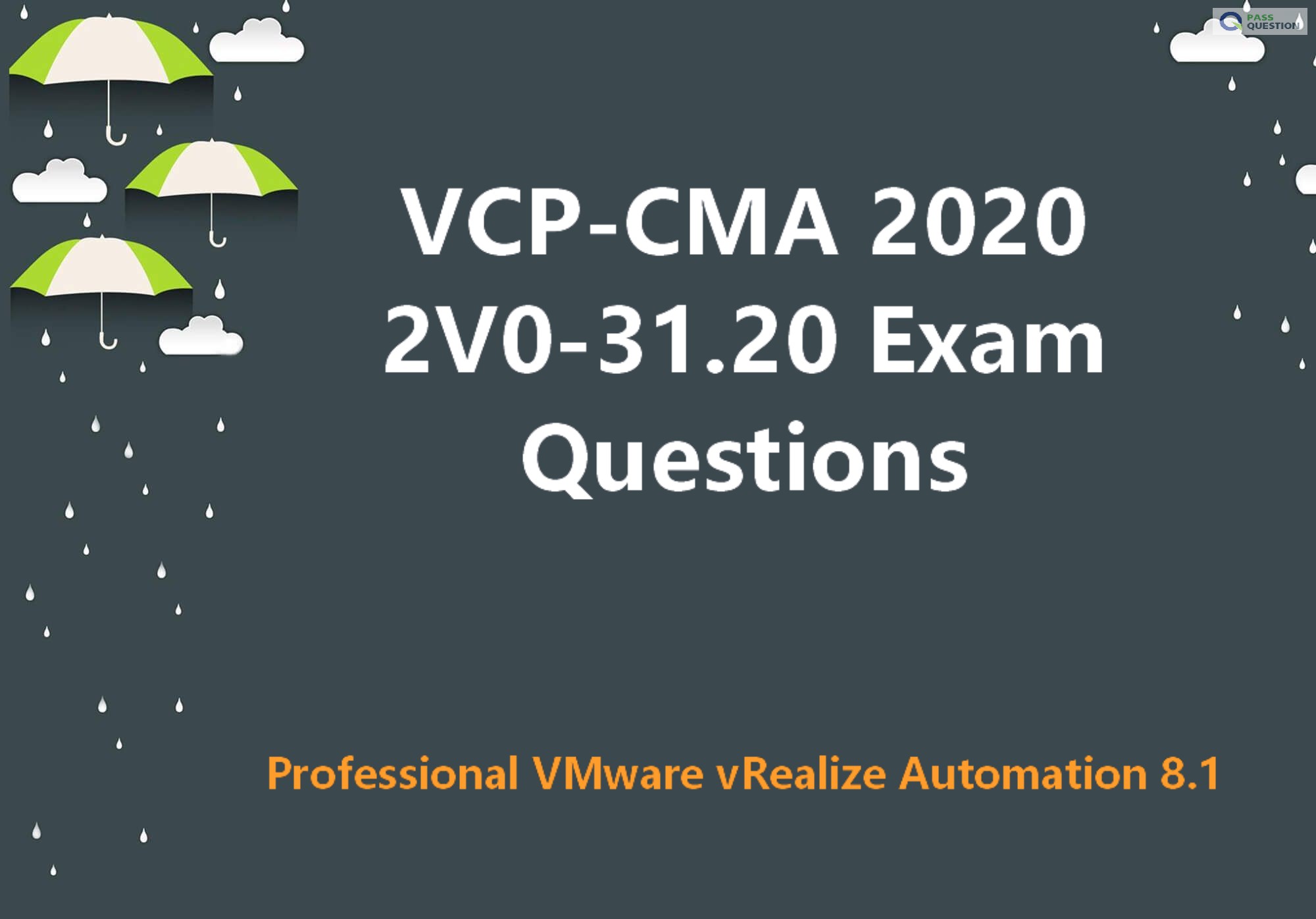VCP-CMA 2020 2V0-31.20 Exam Questions
VMware 2V0-31.20 is the replacement exam of 2V0-31.19 for VCP-CMA 2020 Certification. PassQuestion provides the latest VCP-CMA 2020 2V0-31.20 Exam Questions with full information that is actually required to pass this 2V0-31.20 exam. The VCP-CMA 2020 2V0-31.20 Exam Questions cover all the exam topics and objectives and will prepare you for success quickly and efficiently. We regularly update the VCP-CMA 2020 2V0-31.20 Exam Questions making sure that the students always gain access to the most current product.

2V0-31.20 Exam Details - Professional VMware vRealize Automation 8.1
The Professional VMware vRealize Automation 8.1 Exam (2V0-31.20), which leads to the VMware Certified Professional – Cloud Management and Automation 2020 certification, is a 70-item exam with a passing score of 300 using a scaled method. Candidates are given an appointment time of 140 minutes, which includes a five-minute seating time and adequate time to complete the exam for nonnative English speakers. Actual exam time is 135 minutes.
2V0-31.20 Exam Objectives
Section 1 – Architecture and Technologies
Section 2 – Products and Solutions
Section 3 – Planning and Designing
Section 4 – Installing, Configuring, and Setup
Section 5 – Performance-tuning, Optimization, and Upgrades
Section 6 – Troubleshooting and Repairing
Section 7 – Administrative and Operational Tasks
View Online Professional VMware vRealize Automation 8.1 2V0-31.20 Free Questions
1.When considering the architecture of a clustered deployment of VMware vRealize Automation, which two components will require the configuration of an external load balancer? (Choose two.)
A. vRealize Suite Lifecycle Manager
B. vRealize Automation
C. VMware Identity Manager
D. PostgreSQL Database
E. vCenter Server
Answer: BC
2.An administrator is tasked with creating cloud zones for an existing Amazon Web Services (AWS) cloud account.
Which type of compute resource can be added to the cloud zone?
A. Cluster
B. Elastic Cloud Compute (EC2) Instances
C. Availability Zones
D. Virtual Private Cloud (VPC)
Answer: A
3.An administrator configures cloud accounts for vSphere, Amazon Web Services and Google Cloud Platform. Each public cloud account has a single region configured, with a single cloud zone associated with each. Company policy states that all development workloads should be deployed to the public cloud. The administrator wants to ensure that when creating blueprints for this project an appropriate constraint tag is specified to meet the placement policy and that App-Dev users are allowed to select whether to deploy the machine to production or development. The tagging strategy states that development environments should be tagged with “dev” and production environments should be tagged “prod”.
Which two actions should the administrator take to ensure the objective is met? (Choose two.)
A. Add a capability tag to each public cloud zone, using env:prod as the key/value pair.
B. Add a capability tag to each vSphere cloud zone, using env:prod as the key/value pair.
C. Add a capability tag to each public cloud zone, using env:dev as the key/value pair.
D. Add a capability tag to each vSphere cloud zone, using env:dev as the key/value pair.
E. Add a capability tag to each cloud account, using env:prod as the key/value pair.
Answer: BC
4.What are two purposes of projects in vRealize Automation? (Choose two.)
A. Add cloud accounts
B. Map compute resources to users and groups
C. Organize image mappings
D. Create tenants
E. Configure custom naming
Answer: AB
5.Which vRealize Suite product helps an administrator understand the monetary impact of individual deployments and manage costs in vRealize Automation?
A. vRealize Log Insight
B. vRealize Operations
C. vRealize Network Insight
D. vRealize Suite Lifecycle Manager
Answer: D
Comments
Post a Comment